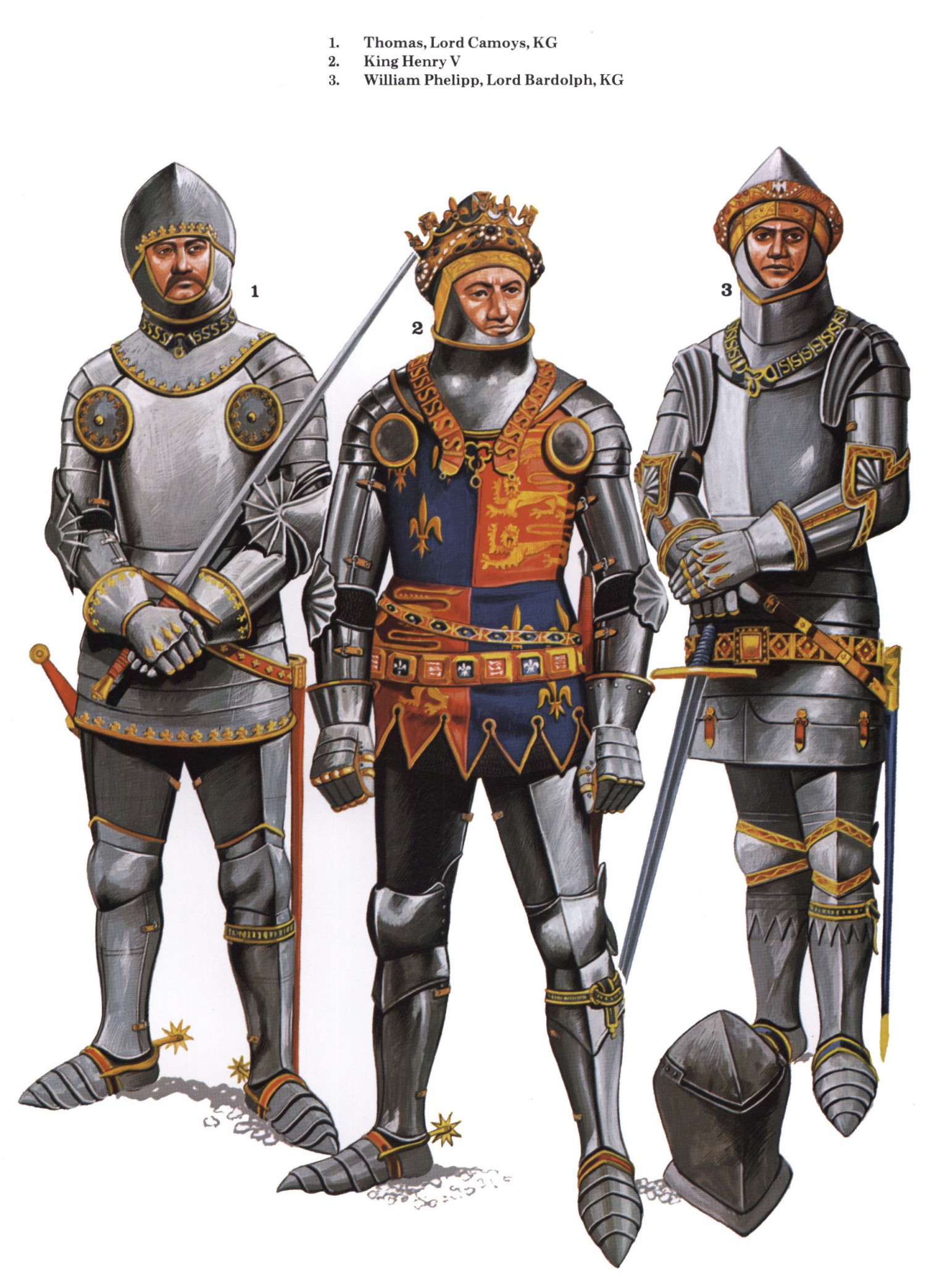Today marks the 600th anniversary of the Battle of Agincourt. To commemorate this famous battle we have organized a day heaped with history for you. The third and final stage of the narrative looks at the controversial events that occured at the end of the Battle of Agincourt - the massacre of the French prisoners.
Extract from Campaign 9: Agincourt 1415 by Matthew Bennett
The battle itself had been very brief. It may have only taken half-an-hour, although some accounts give two – three hours (which probably included some of the preliminaries). It was now early afternoon on a short, late October day. The English were looking to gather their prisoners and tot-up the lucrative ransoms they had made, as well as tending to their wounds and catching their breath. The battle was apparently over, the French utterly defeated and in flight. But something happened to cause Henry to order an action that quite offended against the conventions of warfare: the slaughter of a large part of those taken prisoner. In fact, two things happened.

Lord Camoys, King Henry V and Lord Bardolph
Illustration taken from Men-at-Arms 85: Armies of Agincourt by Christopher Rothero
The first was the report brought to Henry that his camp was being attacked. Exactly when or how this was carried out is far from clear. The conventional story accepted by chroniclers after the battle was that the local lord, Isembart d’Agincourt, assisted by Robinet de Bournoville, Riflart de Clmasse and several other men-at-arms, leading 600 peasants, of their own volition launched a raid on the camp. Certainly several precious items, a crown, some silver and a precious sword were looted from the camp.
[...]
The second action that spurred the massacre was the attempted counter-attack by a remnant of the third division. Amid all the confusion, several lords, named as the Counts of Marle and Fauquembergh and the Lords of Louvroy and Chin, managed to gather together six hundred men-at-arms. With them they made a mounted charge, which, according to Monstrelet, ended as disastrously as all the others.
[...]
The English, although victorious, were very vulnerable. They had by no means secured all their prisoners or accepted their surrender. There were still more than enough heavily armed Frenchmen at liberty to overwhelm the English should they recover their morale. So Henry gave the order to kill the prisoners. Only the most prominent were to be spared, such as the Duke of Orleans and Bourbon. But, as we have seen, high birth was no guarantee at such a moment. The knights and men-at-arms considered it an ignoble act and beneath their dignity to engage in killing defenceless men, so the task was carried out by a squire commanding two hundred archers. Even compared to the mayhem of battle it must have been a grim sight. How were the French killed? St Rèmy, who witnessed the massacre, describes them as ‘cut in pieces, heads and faces’. Indeed that was the only place where a knight in full armour was truly vulnerable. Only if they removed a man’s helmet or lifted his visor could he be killed easily. Those who resisted even this would have been stabbed through the eye-slit in their bascinet. Such cold-blooded killing appalled contemporaries, not so much for how it was done, although that did batter, but for whom it was done to. The men killed were noblemen and gentlemen, not the low-born who were expected to die in a battle. The men who wrote the accounts came from these upper classes, and such brutal realities clashed with the image of war as a gentlemanly pursuit, which they generally promulgated. But they did not blame Henry for carrying out this brutal necessity, but rather those leaders who so alarmed him as to bring the situation about.
For further reading on the battle of Agincourt take a look at Campaign 9: Agincourt 1415, Men-at-Arms 85: Armies of Agincourt, Command 8: Henry V and Weapon 30: The Longbow.
| Part Two: The Main French Attack and Mêlée | BONUS: Agincourt 600th Anniversary Artwork |

Comments
You must be logged in to comment on this post. Click here to log in.
Submit your comment